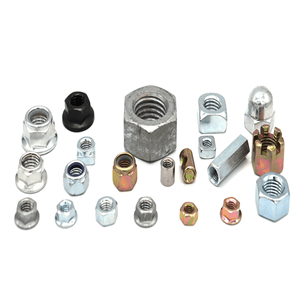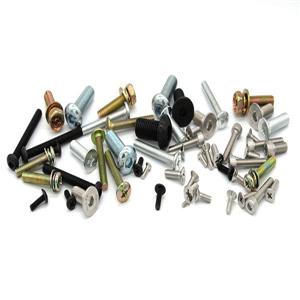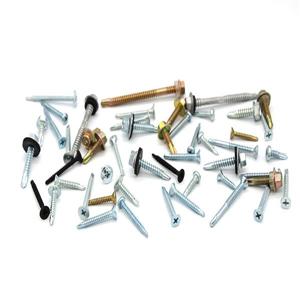Introduction of Hastelloy materials for fastener products
Hastelloy C-276 alloy is a tungsten-containing nickel-chromium-molybdenum alloy with extremely low silicon-carbon content and is considered to be a universal corrosion-resistant alloy.
I. Corrosion resistance
Hastelloy materials are mainly resistant to wet chlorine, various oxidizing chlorides, chloride salt solutions, sulfuric acid and oxidizing salts, and have good corrosion resistance in low and medium temperature hydrochloric acid. Therefore, in the past three decades, in the harsh corrosive environment, such as chemical industry, petrochemical industry, flue gas desulfurization, pulp and paper, environmental protection and other industrial fields have been widely used.
The alloy has the following characteristics: ① Excellent corrosion resistance to most corrosive media in both oxidation and reduction atmospheres. ② Excellent resistance to pitting, crevice corrosion and stress corrosion. The higher Mo and Cr content makes the alloy resistant to chloride ion corrosion, and the W element further improves the corrosion resistance. At the same time, Hastelloy C-276 alloy is one of the only materials resistant to the corrosion of damp chlorine, hypochlorite and chlorine dioxide solutions. It has a high concentration of chloride solution such as ferric chloride and copper chloride Significant corrosion resistance. Suitable for various concentrations of sulfuric acid solution, it is one of the few materials that can be applied to hot concentrated sulfuric acid solution.
Second, physical properties
The physical properties of Hastelloy C-276 alloy are as follows:
Material composition: 57Ni-16Cr-16Mo-5Fe-4W-2.5Co * -1Mn * -0.35V * -0.08Si * -0.01C * * is the maximum a margin
Executive standards: UNS N10276, ASTM B575, ASME SB575, DIN / EN 2.4819
Density: 8.90g / cm3
Third, mechanical properties
Tensile strength: σb≥730Mpa, elongation: δ≥40%.
The hot forming of Hastelloy C-276 alloy is annealed immediately at 1150 ° C and quenched with water. Cold deformation of Hastelloy C-276 alloy will increase its strength.
Hastelloy C-276 alloy and ordinary austenitic stainless steel have similar forming properties. However, because it is stronger than ordinary austenitic stainless steel, it will have greater stress during cold forming. In addition, the work hardening speed of this material is much faster than that of ordinary stainless steel, so in the extensive cold forming process, an annealing process is required.
Fourth, welding and heat treatment
The welding performance of C-276 alloy is similar to that of ordinary austenitic stainless steel. Before using a welding method to weld C-276, measures must be taken to minimize the corrosion resistance of the weld and heat affected zone, such as tungsten electrode. Gas shielded welding (GTAW), metal electrode gas shielded welding (GMAW), submerged arc welding, or other welding methods that can minimize the corrosion resistance of the weld and heat affected zone. However, welding methods such as oxy-acetylene welding, which may increase the carbon content or silicon content of the material's weld and heat-affected zone, are not suitable.
Regarding the choice of welded joints, you can refer to the successful experience of Hastelloy C-276 alloy welded joints in the ASME Boiler and Pressure Vessel Code.
It is best to use mechanical processing for welding grooves, but machining will bring work hardening, so it is necessary to polish the grooves before machining.
Appropriate heat input speed should be used during welding to prevent the occurrence of thermal cracks.
In most corrosive environments, Hastelloy C-276 alloy can be used in the form of weldments. However, in very harsh environments, C-276 materials and weldments are subjected to solution heat treatment to obtain the best corrosion resistance.
The welding of Hastelloy C-276 alloy can choose itself as the welding material or filler metal. If it is required to add certain components to the weld of Hastelloy C-276 alloy, like other nickel-based alloys or stainless steel, and these welds will be exposed to a corrosive environment, then the electrode or wire used for welding requires and Corrosion resistance of base metal.
Hastelloy C-276 alloy solution heat treatment includes two processes: (1) heating at 1040 ℃ ~ 1150 ℃; (2) rapid cooling to black state (about 400 ℃) within two minutes, such processed material Has good corrosion resistance. Therefore, it is not effective to perform stress relief heat treatment only on Hastelloy C-276 alloy. Before the heat treatment, the oil on the alloy surface must be cleaned up. All dirt that may generate carbon during the heat treatment.
The surface of Hastelloy C-276 alloy will generate oxides during welding or heat treatment, which will reduce the Cr content in the alloy and affect the corrosion resistance, so it is necessary to clean the surface. You can use a stainless steel wire brush or grinding wheel, then immerse it in a mixture of nitric acid and hydrofluoric acid in an appropriate ratio and pickle, and then rinse it with water.
Five, application fields
Petrochemical equipment, heat exchangers, flue gas desulfurization equipment, fluid chemical pumps, fluorinators, etc.




